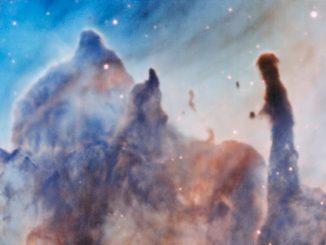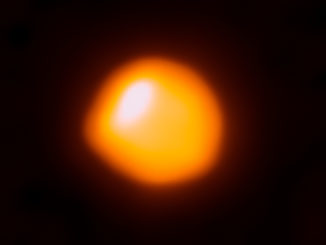The four 1-metre telescopes making up the European Southern Observatory’s new SPECULOOS planet-hunting array in Chile show off their near-infrared prowess with a spectacular look at a target familiar to countless amateur astronomers: the Lagoon Nebula, a vast cloud of gas and dust some 5,000 light years away in Sagittarius were stars and solar systems are in the process of forming.
As the name implies, SPECULOOS – the Search for habitable Planets EClipsing ULtra-cOOl Stars – is designed to study the nearest 1,000 faint, relatively cool stars and brown dwarfs, on the lookout for the tell-tale dimming that occurs when an orbiting planet moves in front of its host sun as viewed from Earth. By studying such light curves, astronomers can identify exoplanets in a star’s habitable zone where water – and thus, life as it’s known on Earth – could in theory exist. Exoplanets found by SPECULOOS and a twin observatory in the Canary Islands will be studied in detail by ESO’s Extremely Large Telescope, NASA’s James Webb Space Telescope and other large instruments.




